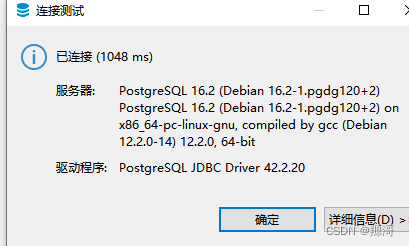PyTorch 实现 Word2Vec(Skip-gram 模型) 的完整代码,使用 中文语料 进行训练,包括数据预处理、模型定义、训练和测试。
1. 主要特点
支持中文数据,基于 jieba 进行分词
使用 Skip-gram 进行训练,适用于小数据集
支持负采样,提升训练效率
使用 cosine similarity 计算相似单词
完整代码:
import torch
import torch.nn as nn
import torch.optim as optim
import numpy as np
import random
import jieba
from collections import Counter
from sklearn.metrics.pairwise import cosine_similarity# ========== 1. 数据预处理 ==========
corpus = ["我们 喜欢 深度 学习","自然 语言 处理 是 有趣 的","人工智能 改变 了 世界","深度 学习 是 人工智能 的 重要 组成部分"
]# 超参数
window_size = 2 # 窗口大小
embedding_dim = 10 # 词向量维度
num_epochs = 100 # 训练轮数
learning_rate = 0.01 # 学习率
batch_size = 4 # 批大小
neg_samples = 5 # 负采样个数# 分词 & 构建词汇表
tokenized_corpus = [list(jieba.cut(sentence)) for sentence in corpus]
vocab = set(word for sentence in tokenized_corpus for word in sentence)
word2idx = {word: idx for idx, word in enumerate(vocab)}
idx2word = {idx: word for word, idx in word2idx.items()}# 统计词频
word_counts = Counter([word for sentence in tokenized_corpus for word in sentence])
total_words = sum(word_counts.values())# 计算负采样概率
word_freqs = {word: count / total_words for word, count in word_counts.items()}
word_powers = {word: freq ** 0.75 for word, freq in word_freqs.items()}
Z = sum(word_powers.values())
word_distribution = {word: prob / Z for word, prob in word_powers.items()}# 负采样函数
def negative_sampling(positive_word, num_samples=5):words = list(word_distribution.keys())probabilities = list(word_distribution.values())negatives = []while len(negatives) < num_samples:neg = np.random.choice(words, p=probabilities)if neg != positive_word:negatives.append(neg)return negatives# 生成 Skip-gram 训练数据
data = []
for sentence in tokenized_corpus:indices = [word2idx[word] for word in sentence]for center_idx in range(len(indices)):center_word = indices[center_idx]for offset in range(-window_size, window_size + 1):context_idx = center_idx + offsetif 0 <= context_idx < len(indices) and context_idx != center_idx:context_word = indices[context_idx]data.append((center_word, context_word))# 转换为 PyTorch 张量
data = [(torch.tensor(center), torch.tensor(context)) for center, context in data]# ========== 2. 定义 Word2Vec (Skip-gram) 模型 ==========
class Word2Vec(nn.Module):def __init__(self, vocab_size, embedding_dim):super(Word2Vec, self).__init__()self.embedding = nn.Embedding(vocab_size, embedding_dim)self.output_layer = nn.Linear(embedding_dim, vocab_size)def forward(self, center_word):embed = self.embedding(center_word) # 获取中心词向量out = self.output_layer(embed) # 计算词分布return out# 初始化模型
model = Word2Vec(len(vocab), embedding_dim)# ========== 3. 训练 Word2Vec ==========
criterion = nn.CrossEntropyLoss()
optimizer = optim.Adam(model.parameters(), lr=learning_rate)for epoch in range(num_epochs):total_loss = 0random.shuffle(data) # 每轮打乱数据for center_word, context_word in data:optimizer.zero_grad()output = model(center_word.unsqueeze(0)) # 预测词分布loss = criterion(output, context_word.unsqueeze(0)) # 计算损失loss.backward()optimizer.step()total_loss += loss.item()if (epoch + 1) % 10 == 0:print(f"Epoch [{epoch+1}/{num_epochs}], Loss: {total_loss:.4f}")# ========== 4. 测试词向量 ==========
word_vectors = model.embedding.weight.data.numpy()# 计算单词相似度
def most_similar(word, top_n=3):if word not in word2idx:return "单词不在词汇表中"word_vec = word_vectors[word2idx[word]].reshape(1, -1)similarities = cosine_similarity(word_vec, word_vectors)[0]# 获取相似度最高的 top_n 个单词(排除自身)similar_idx = similarities.argsort()[::-1][1:top_n+1]return [(idx2word[idx], similarities[idx]) for idx in similar_idx]# 测试相似词
test_words = ["深度", "学习", "人工智能"]
for word in test_words:print(f"【{word}】的相似单词:", most_similar(word))
数据预处理
- 使用
jieba.cut()进行分词 - 创建
word2idx和idx2word - 使用滑动窗口生成
(中心词, 上下文词)训练样本 - 实现
negative_sampling()提高训练效率
模型
Embedding层 学习词向量Linear层 计算单词的概率分布CrossEntropyLoss计算目标词与预测词的匹配度- 使用
Adam进行梯度更新
计算词相似度
- 使用
cosine_similarity计算词向量相似度 - 找出
top_n个最相似的单词
5. 可优化点
使用更大的中文语料库(如 THUCNews)
使用 t-SNE 进行词向量可视化
增加负采样,提升模型训练效率




